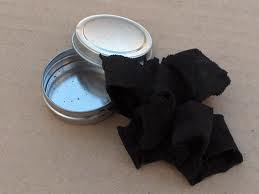 Starting a fire during an emergency can save your life. The inability to build a fire can cost your life.
Starting a fire during an emergency can save your life. The inability to build a fire can cost your life.
Hiking, backpacking, horseback riding, fishing, hunting and many other outdoor activities all require basic wilderness survival skills to handle an emergency situation. Your vehicle ran off the side of the road in a remote location (no cell phone service) with no help in sight and it will be dark soon. This too would require basic wilderness survival skills to handle this situation.
Making fire is significantly important to survive physically and mentally. The heat provided by a fire warms the body, dries wet clothes, disinfects water, and cooks food. Not to be overlooked is the psychological boost and the sense of safety and protection it gives. In the wild, fire can provide a sensation of home, a focal point, in addition to being an essential energy source. Fire may deter wild animals from interfering with a survivor.
Let’s assume you are able to make at least one fire for the first night of survival. You cannot assume that you are going to be rescued the next day, or that you will find your way out of the wilderness the next day. This is why It is crucial that you know how to make char cloth. This will enable you to continue to build fires until you are able to make it to safety.
Char cloth (also called charpaper) is a swatch of fabric made from vegetable fiber (such as linen, cotton or jute) that has been converted via pyrolysis into a slow-burning fuel of very low ignition temperature. It is capable of being ignited by a single spark that can in turn be used to ignite a tinder bundle to start a fire.
It is sometimes made at home for use as the initial tinder when cooking or camping and historically usually provided the “tinder” component of a tinderbox. It is often made by putting cloth into an almost airtight tin with a small hole in it, and cooking it in campfire coals until the smoking slows and the cloth is properly charred.
Charcloth ignites with even the smallest spark, and is therefore commonly used with a flint and steel. It will ignite with the spark of two rocks or with a lighter as long as you are getting at least a spark from that old lighter.
We have found four very effective ways to make char cloth. Making it at home under more controlled conditions allows you to make your own char cloth, store it in a small tin and make it a part of your outdoor survival gear. We also show you how to make it under primitive conditions should you need to make char cloth in a survival situation.
